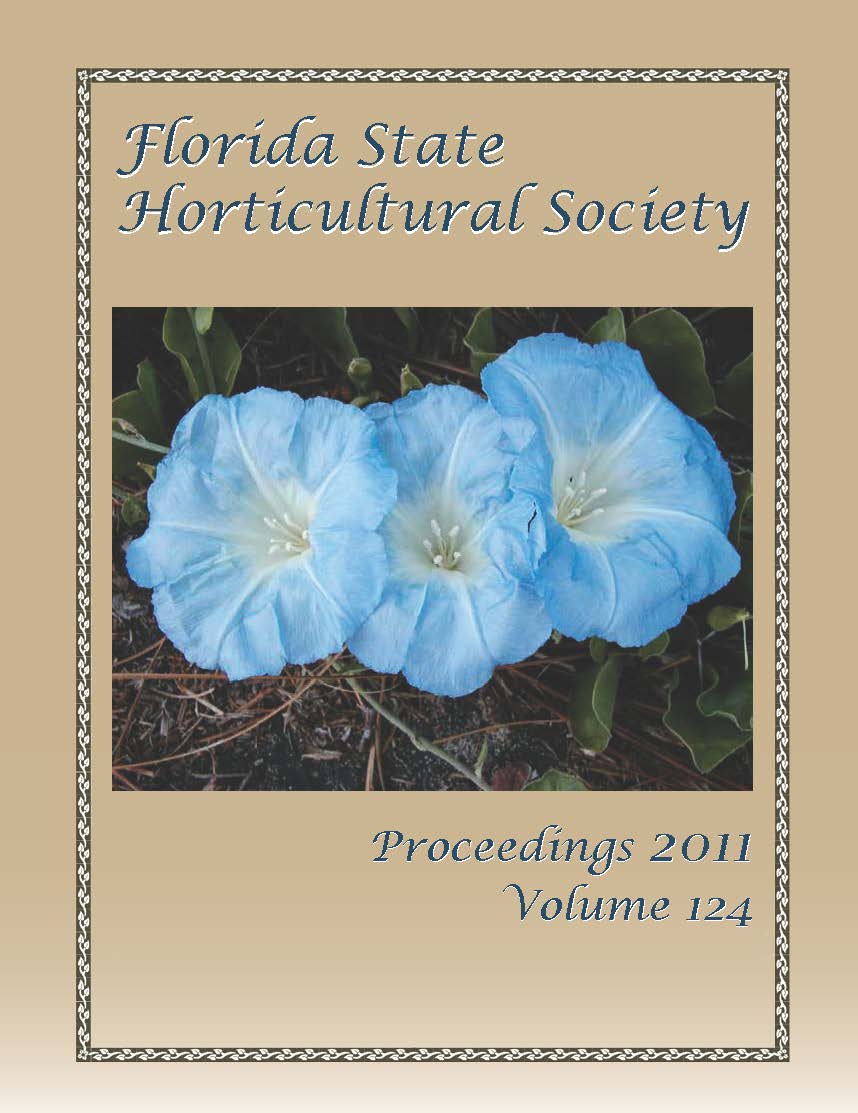Abstract
Pruning blueberry bushes is one of the most labor intensive and costly operations in a commercial planting. According to UF/IFAS Publication #HS985, proper pruning of blueberry plants will help obtain the desired plant size and shape, increase plant vigor and establishment of fruiting wood, reduce over-fruiting and enhance size and allow sufficient sunlight penetration into the canopy to assist with proper fruit development. In June 2010, immediately after the first harvest of a central Florida commercial blueberry planting that had been established for approximately 15 months, a trial was initiated to compare a grower standard pruning program to three pruning regimes and an unpruned treatment in two southern highbush cultivars, ‘Jewell’ and ‘Emerald’. The pruning regimes were as follows: roof, where cuts starting at 2 ft were angled to meet at a point approximately 4 ft high in the middle of the row; box, where lateral shoots were cut back to the margin of the pine bark bed and an even top was cut at approximately 3 ft; and hedge, where just the lateral shoots were trimmed back to the outer margin of the pine bark bed and no topping. In ‘Emerald’ only a treatment called severe box, where the lateral shoots were trimmed into the center of the row an additional 6 to 9 inches and even top was cut at approximately 2½ ft was established. The grower treatment
removed approximately 70% of the top growth back to a height of 1½ ft. In Spring 2011 a count of fruitlets from two terminals of four random plants in each treatment revealed that in ‘Emerald’ the roof and severe box were lower than the grower treatment and in ‘Jewell’, only the box had a lower count than the grower treatment. Harvest data will be taken in Apr. 2011.

